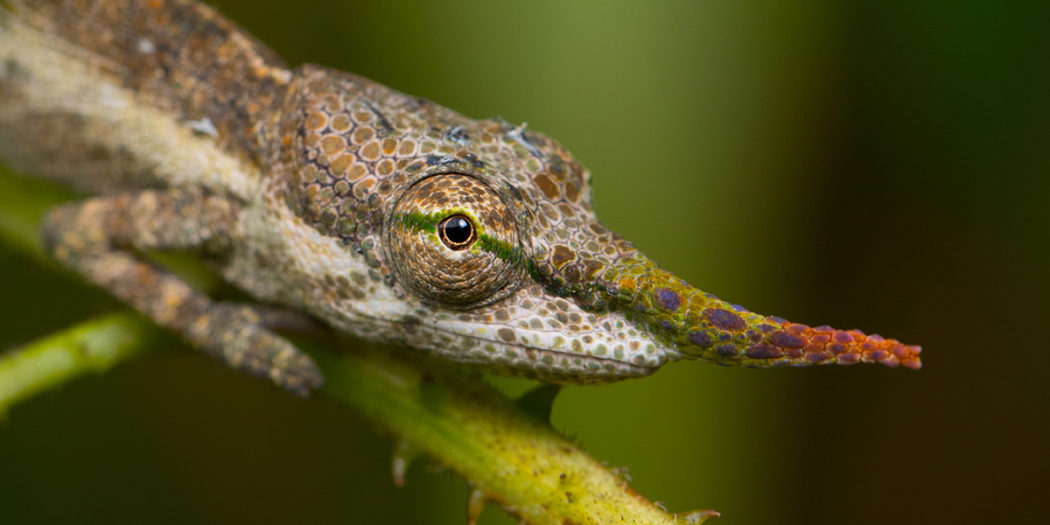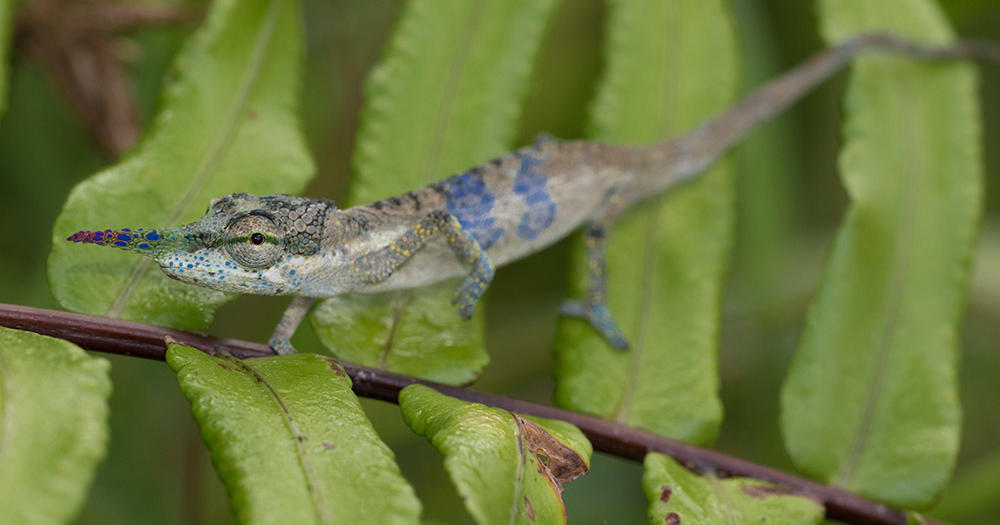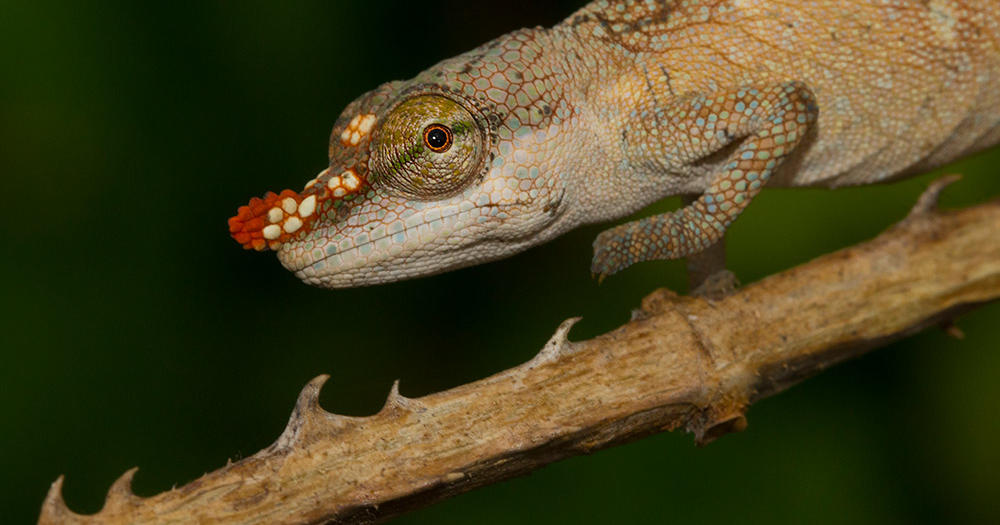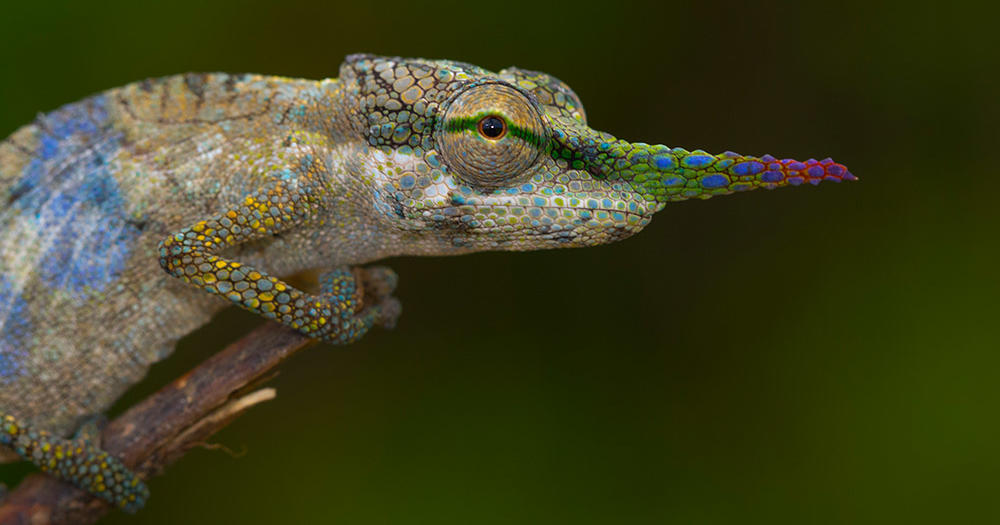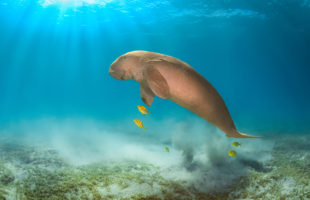With its long, colorful nose, this chameleon is probably one of the most interesting, albeit smaller, species among the long-tongued reptiles: Calumma gallus. Some call it the Pinocchio or Cyrano chameleon because of its characteristic long nose. But actually, there is no “real” English name.
The life of a Calumma gallus begins, as with so many reptiles, in the egg. The egg lies buried about 15 cm deep in the ground and waits for the intense rains that herald the end of the dry season. If it has rained enough, the tiny young animals hatch and climb laboriously on thin blades of grass. The nose still lies on the head when hatching, it is flexible and unfolds only in the course of the first life days to its later form. In Calumma gallus, by the way, only the male carries the characteristic, colorful, long nose. The female’s nose, on the other hand, is bright red and shaped like a leaf. Both sexes are just eleven centimeters long and are always very agile – you have to be fast if you want to take a nice picture!
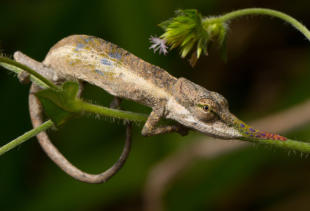
The rainy season is also the mating season of the older Calumma gallus. Only for reproduction do males and females meet, afterward, they go separate ways again. The female lays only a few eggs a few months later. A new life cycle begins.
The easiest to find are the small chameleons on Madagascar’s east coast in Vohimana reserve. They love steep, difficult-to-access slopes with extremely dense vegetation and many ferns near the rainforest. They are difficult to find – only those who are experienced and have a lot of patience can discover Calumma gallus. In the past, they could also be found in Betampona and Mantadia, but the populations are dwindling due to slash-and-burn and ever smaller, fragmented habitats. According to scientists, the individual populations of Calumma gallus are hardly able to find each other. Accordingly, they are listed as “endangered” on the IUCN red list, are not allowed to be exported, and are subject to strict protection regulations. No good prospects for Pinocchio in Madagascar – unless the little chameleons enchant enough travelers and give their human neighbors enough reasons to protect them.
 MADAMAGAZINE Your Magazine about Madagascar
MADAMAGAZINE Your Magazine about Madagascar
